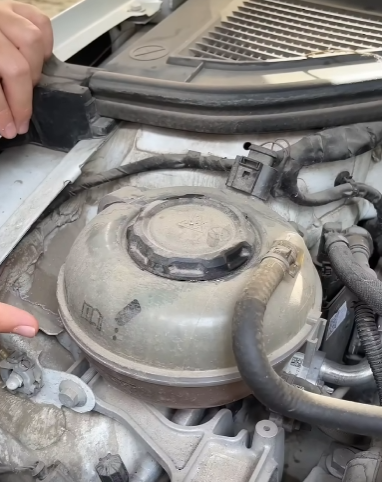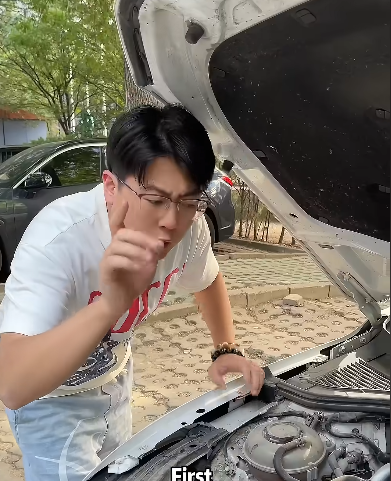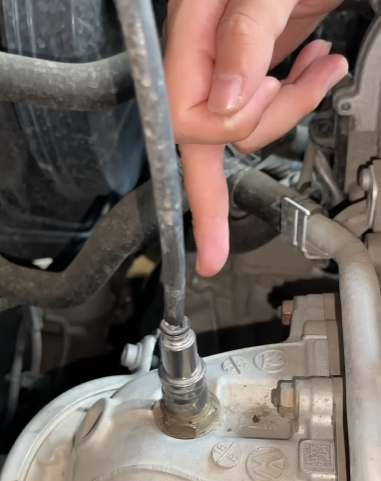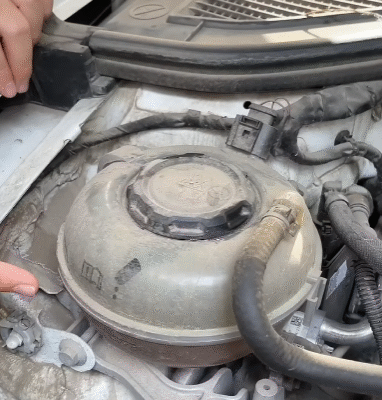
Seeing the check engine light illuminate on your car’s dashboard can be both confusing and stressful. It’s one of those vague warnings that doesn’t tell you exactly what’s wrong, but it does signal that something in your vehicle’s system requires attention. The check engine light is a part of your car’s onboard diagnostics system (OBD-II), and it’s designed to alert you when the engine, emission system, or related components aren’t functioning properly. But what exactly could be causing it?
Let’s explore the many potential reasons behind this mysterious warning light and what actions you should take if it turns on
1. Loose or Faulty Gas Cap
Surprisingly, one of the most common and least serious causes of a check engine light is a loose or faulty gas cap. When the gas cap isn’t properly sealed, it allows fuel vapors to escape, which can throw off the pressure in the fuel system. This will trigger the emissions sensors and, in turn, the check engine light.
What to do: Check the gas cap. Make sure it’s tightly secured. If it appears cracked or damaged, replace it with a new one. After tightening or replacing it, the light might turn off after a few drives.
2. Oxygen Sensor Failure
The oxygen sensor measures the amount of oxygen in the exhaust and helps the engine computer adjust the air-fuel mixture for optimal combustion. If this sensor fails, your engine might burn more fuel than necessary, decreasing fuel efficiency and increasing emissions.
Symptoms: Poor gas mileage, rough engine idle, or smell of fuel from the exhaust.
What to do: A mechanic can replace the oxygen sensor. It’s a relatively simple repair, but ignoring it can lead to more serious engine issues over time.

3. Faulty Catalytic Converter
The catalytic converter transforms harmful exhaust gases (like carbon monoxide) into less harmful emissions before they exit the tailpipe. If it’s clogged, damaged, or failing, your vehicle’s emissions increase and engine performance decreases.
Symptoms: Reduced fuel economy, poor acceleration, sulfur-like (rotten egg) smell, or a failed emissions test.
What to do: Replacing a catalytic converter can be expensive, but it’s essential for emissions compliance and engine performance.
4. Malfunctioning Mass Airflow Sensor (MAF)
The MAF sensor measures how much air is entering the engine and helps the computer deliver the right amount of fuel. If this sensor isn’t working correctly, the engine may run too lean (not enough fuel) or too rich (too much fuel).
Symptoms: Engine hesitation, rough idle, trouble starting, or stalling.
What to do: The sensor might just need cleaning, or it could require replacement.
5. Worn Spark Plugs or Ignition Coils
Spark plugs and ignition coils are essential for starting your engine and keeping it running smoothly. If they’re worn or damaged, the engine can misfire, which leads to reduced performance and increased emissions.
Symptoms: Rough idling, poor acceleration, engine misfires, or hard starts.
What to do: Replace the spark plugs and coils as needed. This is a relatively low-cost maintenance item that can have a big impact.

6. Vacuum Leaks
Your car’s engine relies on a network of vacuum hoses. These hoses can crack or disconnect over time. A vacuum leak affects engine efficiency and triggers the check engine light.
Symptoms: High or rough idle, hissing sound from the engine, or poor fuel economy.
What to do: A mechanic can locate and repair or replace the leaking hose. Special smoke tests are often used to detect hard-to-find leaks.
7. Problems with the EGR Valve
The Exhaust Gas Recirculation (EGR) valve helps reduce nitrogen oxide emissions by recirculating a portion of the exhaust gases back into the combustion chamber. If it fails, emissions can spike, and the engine may run rough.
Symptoms: Engine knock, reduced power, rough idling, or increased emissions.
What to do: Clean or replace the EGR valve depending on its condition.
8. Battery or Charging System Issues
While the battery itself doesn’t usually cause the check engine light to come on, issues in the electrical or charging system can affect sensors or trigger warning signals.
Symptoms: Dim lights, hard starts, or dashboard electrical glitches.
What to do: Test your battery and alternator. Weak voltage can confuse the car’s computer and cause false readings.
9. Aftermarket Parts Issues
Sometimes, aftermarket parts like custom exhausts, radios, or alarms interfere with your car’s computer system or emissions controls.
Symptoms: Unusual behavior after installation of new components.
What to do: Check for compatibility and consult a professional before making any major modifications.

10. Transmission Problems
Modern vehicles link transmission health with engine performance. If your transmission isn’t shifting properly or is slipping, the car may trigger the check engine light.
Symptoms: Hard shifts, jerking during acceleration, or hesitation.
What to do: A transmission scan will reveal specific trouble codes. Address transmission issues promptly to avoid costly damage.
What Should You Do When the Light Comes On?
Step 1: Don’t Panic
A steady light usually means it’s not an emergency, but you should get the car checked soon. A flashing light, however, indicates a serious problem (like a misfire) that could damage the catalytic converter.
Step 2: Scan for Error Codes
Most auto parts stores offer free OBD-II scanning. This will give you diagnostic trouble codes (DTCs) which help identify the specific problem.
Step 3: Address the Issue
Based on the code, determine if it’s a simple fix like a gas cap, or if professional help is needed. Never ignore the light for too long — minor issues can turn into expensive repairs over time.

Final Thoughts
The check engine light is like your car’s way of saying, “Something’s not right.” While it can be triggered by something as small as a loose gas cap, it could also point to more serious issues that, if left untreated, could lead to major engine damage or high repair costs.
Modern cars are sophisticated machines, and their computer systems are constantly monitoring performance and emissions. Paying attention to warnings like the check engine light — and addressing them promptly — keeps your car running safely and efficiently.
So next time you see that little orange or yellow engine icon glow, don’t ignore it. Get it checked, stay informed, and keep your vehicle in top shape.



